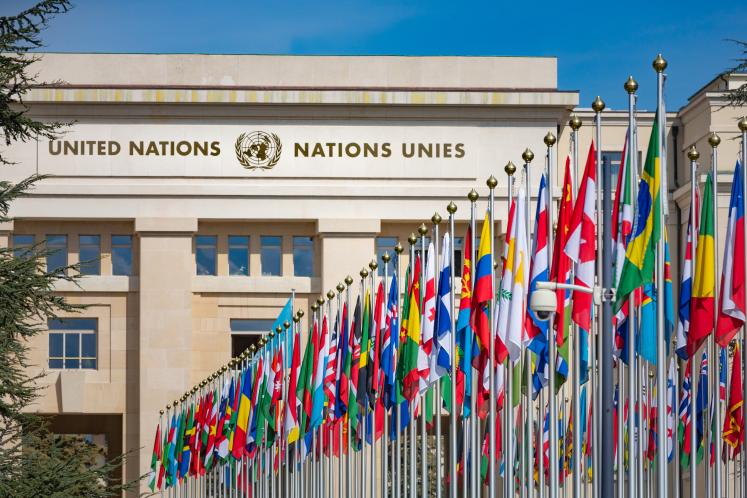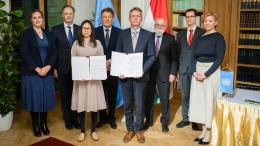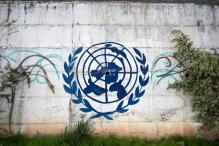The Summit of the Future
On 23 September, the UN General Assembly gathered in New York for the Summit of the Future. The event took place at one of the most difficult moments in the UN’s history: wars in Ukraine and Gaza have brought major powers into direct conflict, while large blocs of the UN’s membership see the organization as having failed to deliver on its promises of sustainable development, climate change and more equitable financial systems.
Despite deep disagreements – and some tense moments in the final 24 hours of the negotiations – the Summit produced three potentially landmark agreements: a Pact for the Future, a Global Digital Compact and a Declaration for Future Generations. That any of these documents was agreed is a testament to the extraordinary efforts of the facilitators, and possibly a demonstration of the influence of civil society (roughly 10,000 of whom were in attendance in the days preceding the Summit).
Organizations in Geneva will need to play a crucial role in implementing some of the most important elements of the Pact.
While the Pact was negotiated and agreed in New York, its implementation will require active and sustained engagement by a wide range of actors around the world, including private organizations, national Governments, civil society and UN agencies, among others. Organizations in Geneva will need to play a crucial role in implementing some of the most important elements of the Pact. To that end, we propose that a dedicated Geneva “track” or “forum” be held to accelerate implementation of its core commitments. To support Member States in this effort, the UN should establish two new entities in Geneva, one to support implementation of the Pact, and a second to condition the Geneva ecosystem on peacebuilding outcomes.
Sustainable development
The Pact focuses on accelerating implementation of the 2030 Agenda, and how to advance beyond 2030. Specifically, it commits to a step-change in financing for the Sustainable Development Goals (SDGs), including by meeting official development assistance targets, increasing private sector investment, mobilizing domestic resources and introducing a series of taxation and trade reforms. These commitments were made alongside commitments to limit global temperatures to 1.5°C above pre-industrial levels, transition away from fossil fuels and reverse biodiversity loss. At its most ambitious, the Pact points the way to a circular economy, based on measures that go beyond GDP to measure human and planetary wellbeing. Taken together, these commitments stand for an important proposition: a combination of investment and reform can help us accelerate implementation of the SDGs while staying within crucial planetary thresholds.
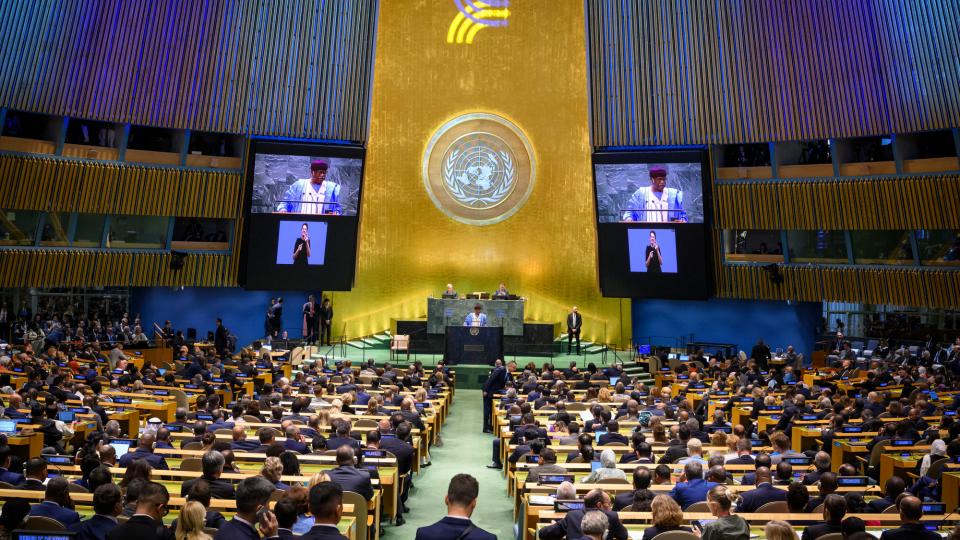
Meeting this challenge will require a system-wide transformation, including significant reforms to trade, intellectual property and the multilateral environmental governance architecture. It will demand major shifts in how we resource livelihoods during a period of intense instability, including from climate change and emerging technologies. It will require a network of actors around the world, many concentrated in Geneva.
Peace and security
At a moment of extraordinary geopolitical tension and active international wars, it is unsurprising that the peace and security commitments of the Pact did not feel particularly ambitious. However, restating our commitments to international humanitarian law, to resolving disputes peacefully and to protecting civilians in conflict may be significantly more important than they sound, given the backsliding we’ve seen in recent years. And in some areas – like nuclear disarmament – what looks like a recommitment could also create new space for progress.
Here it is worth noting several elements of the Pact that will require a significant lift by Geneva-based actors:
- The laws and impacts of war. The Pact contains numerous recommitments to international humanitarian law and protecting civilians in conflict. It includes a pledge to refrain from the use of explosive weapons and to strengthen accountability for serious crimes and gross human rights violations. While not a new set of obligations, the recommitment could give new energy to those working to uphold international and humanitarian and human rights law in conflict.
- Mediation and peaceful resolution of disputes. Again, the Pact does not generate many new obligations, but it does recommit to intensify mediation and calls for the greater use of the Secretary-General’s good offices. At a moment when the formal mechanisms for addressing peace and security risks – most notably the Security Council – are largely failing, Geneva, which hosts some of the most important mediation-focused organizations in the world, could play a greater role in pushing for mediated outcomes.
- Demilitarization and denuclearization. The Pact includes the first recommitment to nuclear disarmament in nearly 15 years: eliminating nuclear weapons and establishing clear steps on all aspects of disarmament. It also contains steps to avoid the weaponization of emerging domains and technologies through a commitment to prevent an arms race in outer space; steps to govern the use and development lethal autonomous weapon systems; and continued assessment of risks around the military applications of AI. Geneva hosts some of the most important organizations and initiatives on disarmament and arms control and will be a leader in implementing these commitments.
As the Geneva Peace Week highlights every year, stronger connective tissue between Geneva and New York is a crucial element in improving our responses to these risks.
Beyond these specific issues, the Pact recognizes the many diverse causes of conflict, including “root causes” at the economic, political, social and cultural levels. Systematic discrimination, exclusion and violations of human rights are some of the most recognized causes of conflict, while there are growing risks that disputes over emerging technologies and natural resources could trigger new wars. As the Geneva Peace Week highlights every year, stronger connective tissue between Geneva and New York is a crucial element in improving our responses to these risks.
Science and technology
One of the most important recurring themes in the Summit of the Future was that of science and technology. The Pact agreed measures to reduce global disparities in science, technology and innovation, including to increase the use of science in policymaking and mobilize more funding for SDG-related research and innovation. Member States specifically committed to strengthen capacities within the UN to leverage science and technology. And in perhaps the highest-profile outcome of the Summit of the Future, Member States agreed a landmark “Global Digital Compact” containing a wide range of commitments aimed at an inclusive, open, sustainable, fair, safe and secure digital future.
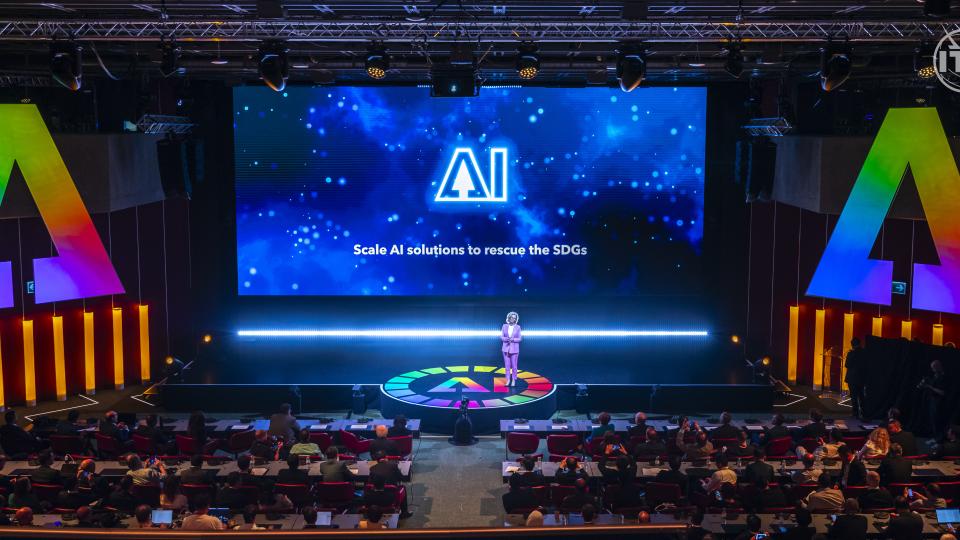
We do not need to go issue by issue here to make the case for Geneva as a crucial forum for taking forward the science and technology commitments in the Pact. Not only is Geneva home to some of the leading UN organizations on technology, but the broader ecosystem has many of the leading science and technology organizations in the world. The annual AI for Good Summit and the Geneva Science Diplomacy Anticipation Summit clearly demonstrate the importance of Geneva to these conversations.
Transforming global governance
The Pact contains a broad array of potential reform proposals, from the Security Council to the international financial architecture. It should be intuitive to close followers of the UN that any multilateral reform efforts will need to involve the whole system, including Geneva.
For example, the Pact calls for strengthening the international response to complex global shocks. This recognizes the need for a more coordinated, effective response to the kinds of global shocks that can disrupt and harm large parts of the world. This is necessarily an open-ended commitment – we do not know what the next shock will be. But given our recent experience with the COVID-19 pandemic, the looming risks of nuclear and biological weapons, and the reality that some of the most acute shocks occur along trade and supply routes, much of the conversation will likely be led by Geneva-based actors focused on, for example, human rights, health, trade and disarmament.
The Declaration on Future Generations
The Pact contains several commitments on youth and future generations (not the same thing, by the way), and includes as an annex a Declaration on Future Generations. In general terms, this commits Member States to putting a long view into their work, to considering the wellbeing of generations yet to be born. In practical terms, this will mean Governments and multilateral organizations building up foresight capacities, potentially creating new focal points (e.g. commissioners for future generations) and eventually adjusting their programming to reflect long-term impacts. The announcement that the Secretary-General will appoint an Envoy for Future Generations at the recent Hamburg Sustainability Conference has added new energy to these commitments.
If we are going to 'future proof' our multilateral system, Geneva is one of the best forums to take this forward.
Geneva is home to some of the most future-oriented organizations in the world, many of which are focused on global risks. If we are going to “future proof” our multilateral system, Geneva is one of the best forums to take this forward.
A Geneva launchpad for the Pact for the Future: two proposals
The above is a very incomplete description of how Geneva might need to be engaged in implementing the Pact for the Future. It only touches the surface of what will necessarily be a much deeper and involved process. And in some cases, the question of who will lead on an issue will be a delicate and fraught one (not least when it comes to AI and emerging technologies). This is not an argument about turf or leadership or who does what.
The Pact for the Future may feel like a sprawling and sometimes confusing set of commitments and proposals. But in that messiness is an opportunity to generate momentum behind some of the more ambitious ideas underlying the Pact. With a concerted, focused effort, there is a chance to translate the broad commitments into concrete actions that can build trust and deliver for people around the world.
That concerted effort by Member States would be bolstered by two new Geneva-based initiatives:
- A Peacebuilding Support Office in Geneva: Every year, Geneva Peace Week hosts a week-long gathering of experts and leaders on the topic of peacebuilding. And every year a recurring topic is the need to better connect Geneva and New York around topics of peace. But five days per year is not enough. Instead, the UN’s Peacebuilding Support Office should establish a small office in Geneva, with a mandate to support and condition the actors around peace outcomes. From trade and labour to migration, technology and the environment, there is a need for all organizations to understand how their work contributes to peaceful outcomes. The Office of the High Commissioner for Human Rights established an office in New York many years ago and the impact has been significant in terms of conditioning the UN system there on human rights. The same should happen in Geneva.
- An initiative for the future of multilateralism: The Pact of the Future is one important aspect of a broader effort to imagine and create a multilateral system fit for the challenges of tomorrow. It offers a roadmap that will require a sustained effort, led by Member States and supported by the UN system as a whole. Within the Secretary-General’s Office in New York, there are capacities to drive that forward, but more is needed. A dedicated capacity in Geneva, building on the Pact and linking the two ecosystems, would give our system the support and focus it needs.
Sceptics may point out that resources are tight and building new offices will not solve the bigger geopolitical reasons the multilateral system is falling short. They may be right. However, these two small entities would be precisely focused on getting more out of the system we already have, helping to network and connect some of the most important actors and initiatives within the multilateral system, and achieving the kind of ambitious transformations needed to meet the promise of the Pact for the Future.
Suggested citation: Day Adam, Buddenhorn Sophie., "What could the Pact for the Future mean for Geneva?," UNU-CPR (blog), 2024-10-17, 2024, https://unu.edu/cpr/blog-post/what-could-pact-future-mean-geneva.

